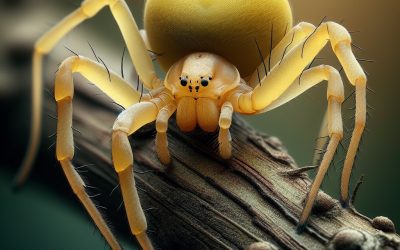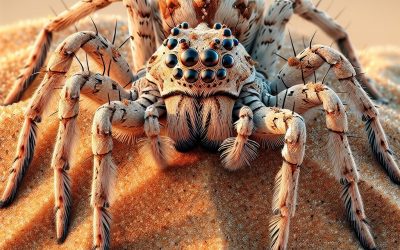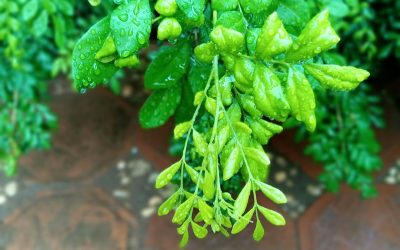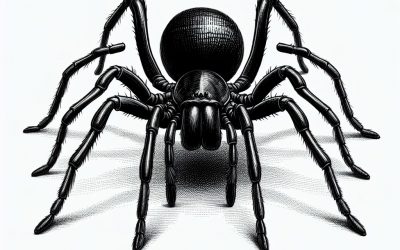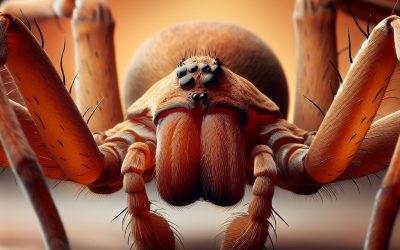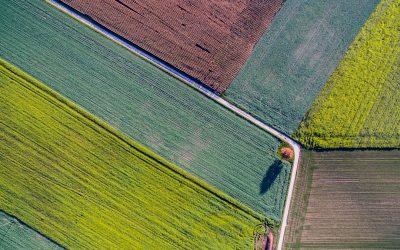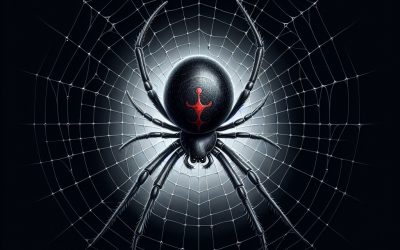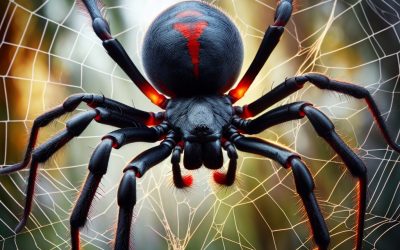Explore the World Through Geography, Natural Resources & Daily History
Clear, reliable and engaging guides that help you understand our planet — from UK geography education to global natural resources and On This Day history events.
Explore, discover, and learn about the wonders of our world! At Earth Site, we’re passionate about bringing geography, history, and science to life for curious minds of all ages. Whether you’re delving into historical events, uncovering the mysteries of the natural world, or seeking interactive resources, you’re in the right place.
Here, you can uncover the stories behind historical events, explore the natural wonders of our planet, and gain valuable insights into how the Earth’s systems shape our daily lives. From the towering peaks of mountain ranges to the far-reaching impacts of human innovation, we aim to make every topic both engaging and informative.
Start your journey of discovery with us today, and let’s make learning an adventure!
What We Cover
Earth Site brings together engaging and accessible educational content designed to help you understand the world, its history, and its natural systems.
🌍 Geography Education (UK & Worldwide)
We publish clear, easy-to-understand geography resources for students, teachers and curious learners. Our guides support geography education in the UK and cover physical geography, climate, ecosystems, population, and global development.
⛏️ Natural Resources & Environmental Geography
Explore detailed country profiles covering natural resources, mining, energy, geology and global environmental challenges. We show how nations manage minerals, water, land and ecosystems, and why these resources matter.
📅 On This Day in History
Every day has a story. Our On This Day history series features major events, anniversaries, traditions, and cultural milestones from around the world — with timelines, context, and fun facts.
TIMELINE
Finding Your Tribe: The Power of Circles in Building Community
Humans are social creatures by nature, and the need for connection and belonging is deeply ingrained in our DNA. Throughout history, communities have played a vital role in our personal growth and development. Whether it’s a small group of friends or a larger community, finding your tribe can have a profound impact on your life. Community provides a sense of belonging and connection that is essential for our overall well-being. It gives us a support system, a place where we can share our joys and sorrows, and a network of people who understand and accept us for who we are. In a world that can often feel isolating and disconnected, finding your tribe can be a lifeline. Key Takeaways Community is important for human connection and support. A tribe is a group of people who share common values, interests, and goals. Finding your tribe can provide emotional support, personal growth, and a sense of belonging. Identifying your tribe involves exploring your interests, values, and passions. Building a strong community involves creating rituals and traditions, navigating differences, and maintaining healthy communication. What is a Tribe? Understanding the Concept The concept of tribes has deep historical and cultural significance. In ancient times, tribes were groups of people who shared common ancestry, language, and customs. They provided a sense of identity and belonging, and were essential for survival in harsh environments. In modern times, the concept of tribes has evolved to encompass communities that are not necessarily based on blood ties or geographic proximity. A tribe can be any group of people who share common interests, values, or goals. It can be...
The Silent Hunter: Learning About the Sac Spider (Cheiracanthium spp.)
The Cheiracanthium spp., commonly known as the sac spider, is a fascinating and often misunderstood creature. Belonging to the family Eutichuridae, this spider is found in various parts of the world, including North America, Europe, and Asia. With over 100 species within the genus Cheiracanthium, these spiders play an important role in the ecosystem. Understanding their behavior and characteristics is crucial for both researchers and the general public. Key Takeaways The Sac Spider, also known as the Silent Hunter, is a venomous spider found in many parts of the world. Physical characteristics of the Cheiracanthium spp. include a yellowish-brown color, long legs, and a distinctive sac-like structure for carrying eggs. The Sac Spider prefers to live in warm, dry environments such as deserts, grasslands, and forests. The Silent Hunter feeds on insects and other spiders, using its venom to immobilize prey. A bite from the Cheiracanthium spp. can cause symptoms such as pain, swelling, and redness, but is rarely life-threatening. Prevention and control measures for the Sac Spider include keeping homes and outdoor areas clean and free of clutter. Misconceptions and myths about the Cheiracanthium spp. include the belief that its venom is deadly to humans. The Silent Hunter plays an important role in controlling insect populations in its ecosystem. Research and conservation efforts for the Sac Spider are ongoing, with a focus on understanding its behavior and venom properties. Physical Characteristics of the Cheiracanthium spp. The sac spider is relatively small in size, with adults measuring around 6 to 10 millimeters in length. They have a pale yellow or light brown body with darker markings on their abdomen....
The Six-eyed Sand Spider: Facts and Myths Unveiled
The Six-eyed Sand Spider, also known as Sicarius hahni, is a fascinating and enigmatic species of spider that is found in the deserts of southern Africa. This spider is known for its unique appearance and venomous bite, making it a subject of interest for scientists and arachnologists. Understanding the Six-eyed Sand Spider is important not only for studying its biology and behavior, but also for dispelling myths and misconceptions surrounding this intriguing creature. Key Takeaways The Six-eyed Sand Spider is a venomous spider found in deserts of southern Africa. It has unique physical characteristics such as six eyes and a flattened body. The spider is found in sandy habitats and has a limited distribution range. The venom of the Six-eyed Sand Spider is potent and can cause severe symptoms in humans. Despite popular myths, the spider is not as lethal as commonly believed and plays an important role in the ecosystem. Physical Characteristics of the Six-eyed Sand Spider The Six-eyed Sand Spider is a medium-sized spider, with females reaching a body length of about 1.5 centimeters and males being slightly smaller. One of its most distinctive features is its six eyes, arranged in three pairs on the front of its head. This is unusual among spiders, as most species have eight eyes. The spider’s body is flattened and oval-shaped, with a sandy brown color that helps it blend in with its desert environment. In terms of physical appearance, the Six-eyed Sand Spider can be compared to other spider species such as the Brown Recluse Spider (Loxosceles reclusa) and the Black Widow Spider (Latrodectus mactans). While all three spiders have...
Unlocking the Power of Triangles: How to Use Them in Your Daily Life
Triangles are one of the most fundamental shapes in geometry and have significant importance in various fields. From mathematics to design, triangles play a crucial role in understanding and solving complex problems. They are not only a basic shape but also possess unique properties that make them versatile and powerful. In this article, we will explore the different aspects of triangles and their significance in different areas of study and practice. Key Takeaways Triangles are a basic geometric shape with three sides and three angles. Triangles can be used as a tool to achieve goals and create eye-catching designs. Triangles can simplify complex equations in mathematics and help explore shape and space in geometry. Triangles play a role in physics by understanding force and motion. Triangles have spiritual significance and can be used in meditation and healing. Understanding the Basics: What are Triangles and How Do They Work? A triangle is a polygon with three sides and three angles. It is the simplest polygon and serves as the building block for more complex shapes. Triangles have several basic properties that make them distinct. Firstly, the sum of the interior angles of a triangle is always 180 degrees. This property allows for easy calculation of unknown angles in a triangle. Secondly, the lengths of the sides of a triangle determine its shape and classification. There are several types of triangles based on their side lengths and angle measurements. An equilateral triangle has three equal sides and three equal angles, each measuring 60 degrees. An isosceles triangle has two equal sides and two equal angles. A scalene triangle has no equal...
Discovering the Hidden Gems of Benin: A Journey Through West Africa’s Best-Kept Secret
Benin, located in West Africa, is a country that often goes unnoticed by travelers. However, those who do venture to this hidden gem are rewarded with a rich cultural heritage, stunning natural wonders, beautiful beaches, a thriving art scene, delicious cuisine, and vibrant markets. From the historical sites of the Kingdom of Dahomey to the spiritual shrines and festivals of the Vodun religion, Benin offers a unique and authentic travel experience. Whether you are an adventure seeker, a history buff, or a lover of art and culture, Benin has something for everyone. Key Takeaways Benin is a land of hidden gems waiting to be discovered by travelers. The country boasts a rich cultural heritage, with traditional practices and festivals still celebrated today. From the Pendjari National Park to the Tanougou Falls, Benin offers a range of natural wonders to explore. Benin’s beaches are a must-visit, with crystal-clear waters and white sand. The thriving art scene in Benin showcases the country’s creativity and talent. Uncovering the Rich Cultural Heritage of Benin One of the main reasons why Benin is worth visiting is its fascinating history and cultural heritage. The Kingdom of Dahomey, which existed from the 17th to the 19th century, was known for its powerful rulers and fierce warriors. The Royal Palaces of Abomey, a UNESCO World Heritage site, offer a glimpse into this rich history. These palaces were once the residence of the kings and queens of Dahomey and are adorned with intricate carvings and murals. Another important aspect of Beninese culture is the Vodun religion. Vodun, also known as Voodoo, is practiced by a significant portion of...
The Enigmatic Mouse Spider: Discovering the Fascinating World of Missulena spp.
The mouse spider (Missulena spp.) is a fascinating and enigmatic species of spider that is native to Australia. It belongs to the family Actinopodidae, which also includes the trapdoor spiders. The mouse spider is known for its unique physical characteristics, venomous bite, and elusive nature. Despite its name, the mouse spider does not prey on mice but instead feeds on insects and other small invertebrates. The mouse spider is considered enigmatic due to its elusive behavior and limited research conducted on the species. It is often mistaken for other spider species, such as the funnel-web spider, due to its similar appearance and venomous bite. The lack of comprehensive studies on the mouse spider has led to a limited understanding of its biology, behavior, and ecological role. However, recent research efforts have shed some light on this mysterious arachnid. Key Takeaways The Mouse Spider is a mysterious and enigmatic species that is native to Australia. Missulena spp. have distinct physical characteristics, including a stocky body, short legs, and a glossy black or dark brown color. Mouse Spiders can be found in various habitats across Australia, including forests, grasslands, and deserts. The venom of the Mouse Spider can be dangerous to humans and has potential medical importance. Missulena spp. are carnivorous and feed on a variety of prey, including insects, spiders, and small vertebrates. The Physical Characteristics of Missulena spp.: A Closer Look The mouse spider is a medium-sized spider with a body length ranging from 1 to 3 centimeters. It has a robust and compact body shape, with a glossy black or dark brown exoskeleton. The abdomen is spherical in...
Surviving a Brown Recluse Spider Bite: What You Need to Know
The brown recluse spider, scientifically known as Loxosceles reclusa, is a venomous spider that is found primarily in the United States. While it is not aggressive and typically avoids human contact, its bite can be dangerous and potentially life-threatening. In this article, we will explore the characteristics of the brown recluse spider, how to identify its bite, common symptoms, and the importance of seeking immediate medical attention. We will also discuss home treatment options, cleaning and disinfecting the bite area, coping with pain and swelling, potential complications, prevention tips, and what to do if you encounter a brown recluse spider. Key Takeaways Brown recluse spiders are venomous and can be found in certain regions of the United States. Identifying a brown recluse spider bite can be difficult, but it typically appears as a red or purple blister with a white or yellow center. Common symptoms of a brown recluse spider bite include pain, itching, fever, and nausea. Seeking immediate medical attention is crucial if you suspect you have been bitten by a brown recluse spider. While there are home remedies for treating a brown recluse spider bite, it is important to consult with a healthcare professional first. Understanding the Brown Recluse Spider The brown recluse spider is a small spider that measures about 6 to 20 millimeters in length. It has a characteristic violin-shaped marking on its cephalothorax, which is the part of its body where the legs are attached. This marking gives it the nickname “fiddleback spider.” The color of the spider can vary from light tan to dark brown. It has six eyes arranged in pairs, unlike...
Mastering Photography: Capturing the Perfect Shot from All Angles
Photography has become an integral part of our lives. It allows us to capture and preserve moments, emotions, and memories that would otherwise fade away with time. Whether it’s a breathtaking landscape, a candid portrait, or a simple snapshot of everyday life, photography has the power to evoke emotions and tell stories. In this blog post, we will explore the fundamentals of photography and provide tips and techniques to help you improve your skills and take captivating photographs. Key Takeaways Understanding aperture, ISO, and shutter speed is fundamental to photography. The rule of thirds and leading lines can help compose a visually pleasing shot. Lighting techniques can make or break a photograph’s impact. Balancing brightness and contrast is key to mastering exposure. Shooting in different modes, such as manual and aperture priority, can give you more control over your photos. Understanding the Fundamentals of Photography: From Aperture to ISO To take great photographs, it is essential to understand the three fundamental elements of exposure: aperture, shutter speed, and ISO. Aperture refers to the size of the opening in the lens through which light enters the camera. It affects the depth of field, or the range of sharpness in a photograph. By adjusting the aperture, you can control whether the background is blurry or sharp. Shutter speed, on the other hand, determines how long the camera’s sensor is exposed to light. A fast shutter speed freezes motion, while a slow shutter speed creates motion blur. ISO measures the sensitivity of the camera’s sensor to light. A low ISO setting is ideal for well-lit situations, while a high ISO setting is...
The Deadly Beauty: Unveiling the Secrets of the Black Widow Spider (Latrodectus spp.)
The black widow spider is a well-known and feared arachnid that belongs to the genus Latrodectus. It is one of the most venomous spiders in the world, and its bite can be potentially dangerous to humans. Understanding this species is important for both scientific research and public safety. Key Takeaways The Black Widow Spider is a venomous arachnid found in North and South America. It is identified by its shiny black body and red hourglass-shaped marking on its abdomen. Black Widow Spiders prefer warm, dry habitats such as deserts, forests, and urban areas. Their venom contains neurotoxins that can cause muscle pain, cramps, and in severe cases, paralysis and death. Female Black Widow Spiders are known for their cannibalistic behavior and can lay up to 900 eggs in a single sac. Physical Characteristics of the Black Widow Spider The black widow spider is easily recognizable by its shiny black body and distinctive red hourglass-shaped marking on its abdomen. The female black widow is larger than the male, measuring about 1.5 inches in length, while the male is only about half that size. The female’s body is also more robust, while the male has longer legs. Distribution and Habitat of the Black Widow Spider Black widow spiders are found in various parts of the world, including North America, Europe, Africa, and Asia. In North America, they are most commonly found in the southern and western regions. These spiders prefer warm climates and are often found in dark, secluded areas such as woodpiles, sheds, and outdoor toilets. Venom of the Black Widow Spider and Its Effects on Humans Category Data/Metrics Spider...
Redback Spider: The Notorious Arachnid of Australia
The redback spider (Latrodectus hasseltii) is a venomous spider native to Australia. It belongs to the family Theridiidae, which includes other widow spiders found around the world. The redback spider is known for its distinctive red or orange stripe on its abdomen, which gives it its name. It is a small spider, with females measuring around 1 cm in length, while males are much smaller, only reaching about 3-4 mm in length. Studying the redback spider is important for several reasons. Firstly, it is one of the most venomous spiders in Australia, and its bite can cause severe symptoms in humans. Understanding its behavior and venom can help in developing effective treatments for bites. Secondly, the redback spider plays an important role in the ecosystem as a predator, controlling populations of insects and other small arthropods. Lastly, the redback spider has cultural significance in Australia and is often featured in folklore and art. Key Takeaways The Redback Spider is a venomous spider native to Australia. It is easily recognizable by its black body with a distinctive red stripe on the abdomen. Redback Spiders are found in a variety of habitats across Australia, including urban areas. Their diet consists mainly of insects, which they catch in their webs using their venom. Redback Spider bites can cause severe symptoms, but prompt medical treatment can be effective in managing the effects of the venom. Physical Characteristics of the Redback Spider The redback spider has a distinctive appearance that makes it easily recognizable. The female redback spider has a black body with a prominent red or orange stripe on its abdomen. This stripe...
Exploring the Fundamentals of Geometry: Understanding Points, Lines, and Planes
Geometry is a branch of mathematics that deals with the study of shapes, sizes, and properties of figures and spaces. It is derived from the Greek words “geo” meaning earth and “metron” meaning measurement. Geometry has been studied for thousands of years and has played a crucial role in various fields such as architecture, engineering, art, and physics. Geometry is important in everyday life as it helps us understand and navigate the physical world around us. For example, when we look at a building, we can use geometry to determine its height, width, and depth. In addition, geometry is used in navigation systems to calculate distances and angles. It also plays a vital role in design and construction, ensuring that structures are stable and aesthetically pleasing. Furthermore, geometry is essential in various fields such as engineering and architecture. Engineers use geometry to design structures such as bridges and buildings, ensuring that they are structurally sound. Architects use geometry to create visually appealing designs and to calculate dimensions accurately. In the field of physics, geometry is used to describe the shape of objects and to understand the behavior of light and sound waves. Key Takeaways Geometry is the study of shapes, sizes, positions, and dimensions of objects in space. Points, lines, and planes are the basic building blocks of geometry. Points are defined as a location in space with no size or shape, and they have properties such as distance and midpoint. Lines can be classified as straight, curved, or broken, and they have properties such as length, slope, and intersection. Planes are flat surfaces that extend infinitely in all...
Exploring the Hidden Gems of Belize: A Journey to the Heart of Central America
Nestled on the eastern coast of Central America, Belize is a small country with a rich history and vibrant culture. Bordered by Mexico to the north and Guatemala to the west and south, Belize is known for its stunning natural landscapes, diverse wildlife, and ancient Mayan ruins. With its unique blend of indigenous and colonial influences, Belize offers travelers a truly one-of-a-kind experience. Belize has a fascinating history that dates back thousands of years. The country was once home to the ancient Mayan civilization, and remnants of their impressive architectural achievements can still be seen today. In more recent history, Belize was colonized by the British and was known as British Honduras until it gained independence in 1981. This blend of indigenous and colonial influences is evident in Belize’s culture, language, and cuisine. What sets Belize apart as a travel destination is its untouched beauty and off-the-beaten-path experiences. While neighboring countries like Mexico and Costa Rica have become popular tourist destinations, Belize remains relatively undiscovered. This means that visitors to Belize can explore pristine natural landscapes, ancient ruins, and vibrant local communities without the crowds often found in other tourist hotspots. Key Takeaways Belize is a hidden gem in Central America with a rich blend of indigenous and colonial traditions. Off the beaten path, Belize offers hidden treasures waiting to be discovered. From caves to coral reefs, Belize boasts natural wonders that are a must-see. Exploring Mayan ruins provides a window into Belize’s ancient past. Belizean cuisine is a fusion of flavors that will delight any foodie. Off the Beaten Path: Discovering Hidden Treasures in Belize One of the...

